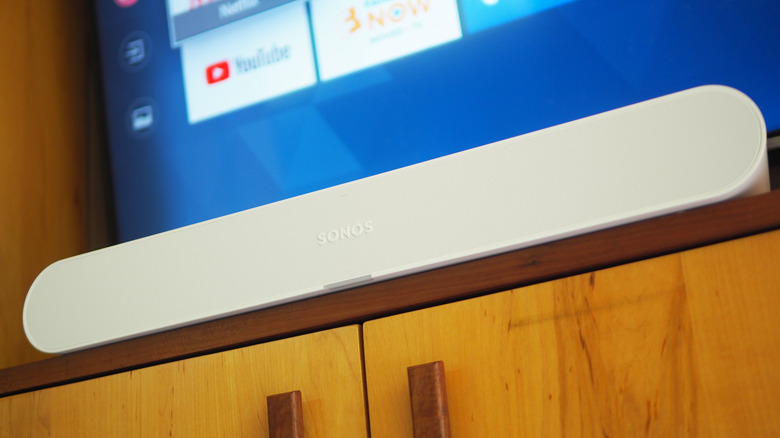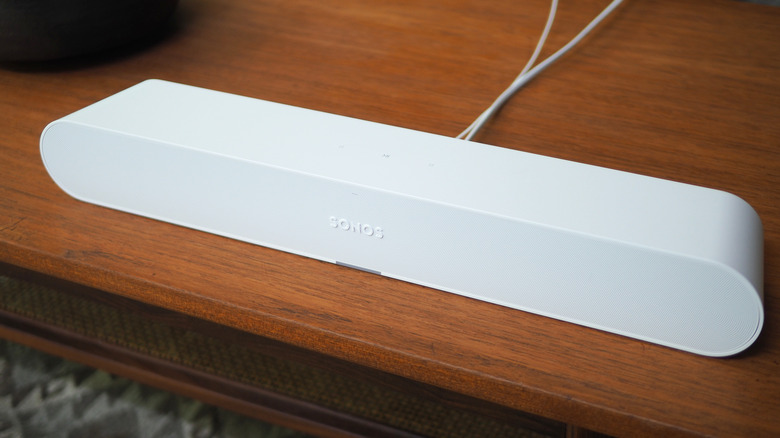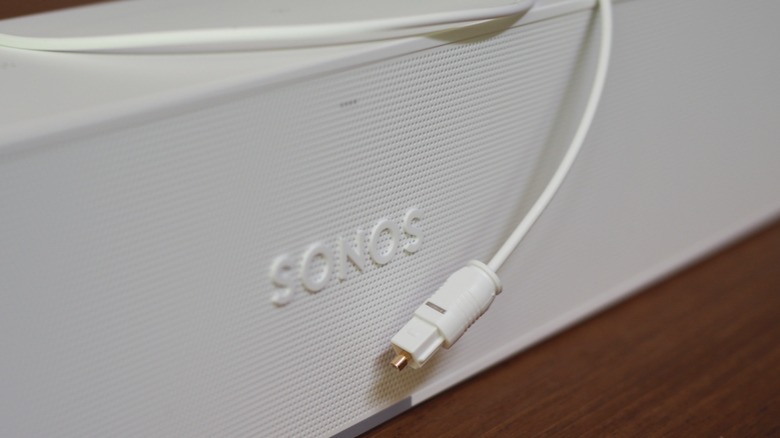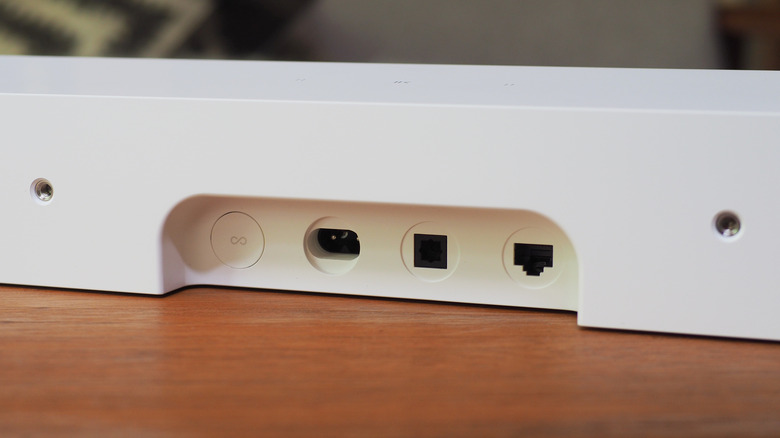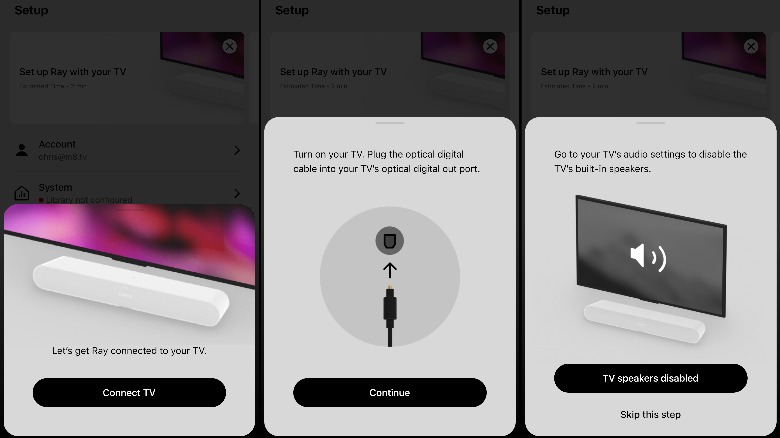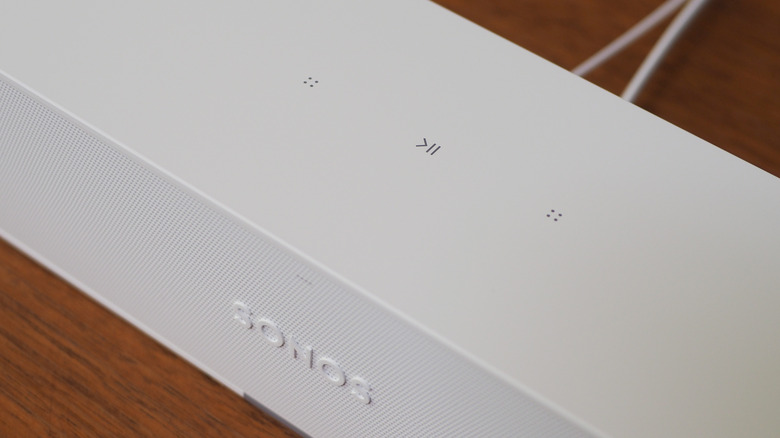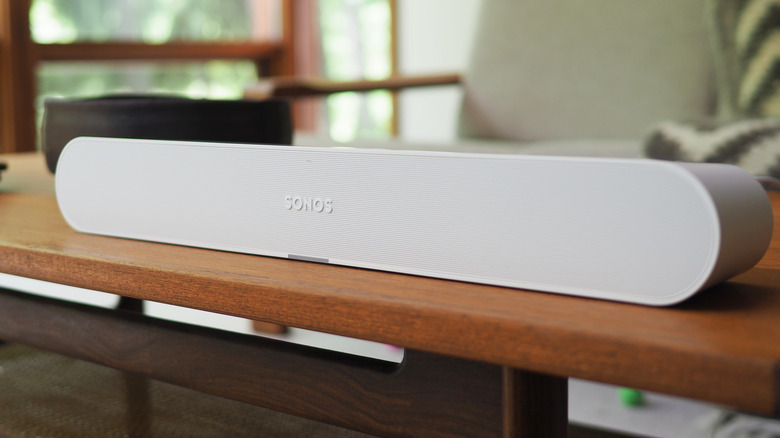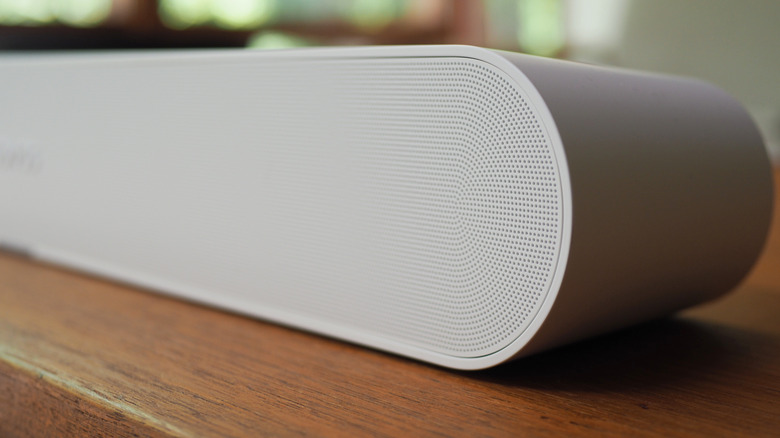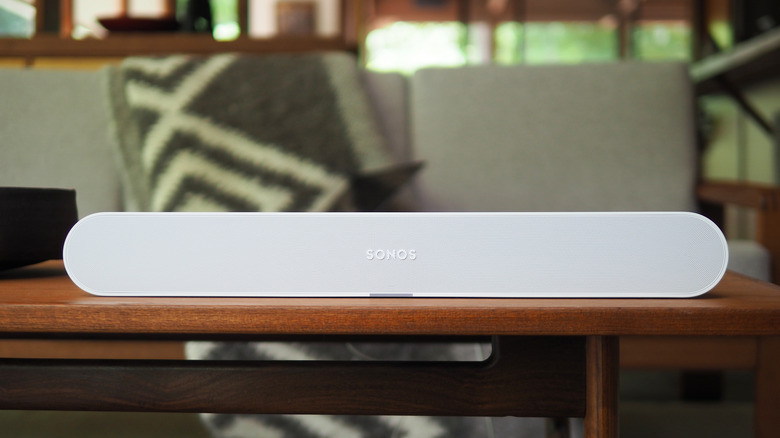Sonos Ray Review: Affordable Soundbar Keeps Things Simple
- Affordable entry into Sonos home theater
- Very easy setup
- Undoubtedly sounds better than your TV's speakers
- All the advantages of the Sonos ecosystem
- No Dolby Atmos
- No microphone for smart speaker use
- Best in sub-300 square foot rooms
TVs have never been cheaper, and it's usually sound — not picture quality — where the biggest compromises are made. Tiny, tinny speakers can be a letdown in even the largest 4K and 8K sets, making a soundbar an easy upgrade for a TV room or den. Sonos has offered just that for years now but, with the arrival of the $279 Sonos Ray, the price of entry is the lowest it's ever been.
The model's smaller than any soundbar from Sonos before, too — surprisingly so, when you first take it out of the box. The Sonos Ray is 4 inches shorter than the Beam (Gen 2) and half the length of Arc. Where those speakers have drivers pointing both forward and up, Ray's grille only runs across the front. That design is because the soundbar's two tweeters and two midwoofers all face forward so as not to be muffled if you slot the soundbar into a TV cabinet.
Touch-sensitive buttons for play/pause, skip, and volume run along the top of the matte-finish black or white casing. Lights behind the grille show connection and mute status (and you can optionally turn them off in the Sonos app). Most importantly, while it may be the cheapest Sonos soundbar, it doesn't feel cheap.
Lowest price, old-school connection
Like Beam and Arc, Ray works both as a standalone speaker or as a part of a multi-room Sonos system. It's as happy playing music as it is TV and movie soundtracks, and you can link it with other Sonos speakers in the room — or multiple rooms — for synchronized music playback. There's both Wi-Fi and ethernet to get Ray online, and two screw mounts on the back for putting Ray on a wall.
Unlike Sonos' other current soundbars, though, Ray goes back to a relatively old-school optical digital connection to link to your TV rather than HDMI-ARC. It's a choice that obviously saves some money, but Sonos argues that it also fits with the convenience angle that the new, more affordable model is focused on.
What do you give up? Bandwidth is the big one, and that limits the Ray to Dolby Digital 5.1 and DTS Digital Surround sound. If you want Dolby Atmos support and the newer format's height channels, you'll need to step up to a Beam (Gen 2) or Arc.
Easy setup is one big advantage
If there's one good thing about Sonos skipping HDMI-ARC this time around, it's that setting up the new soundbar is gloriously straightforward. Most TVs from the past 10+ years have an optical digital output; Sonos includes the cable for that in the box. Plug it and the power cable in, and a pop-up in the Sonos app should offer to walk you through getting everything working.
The soundbar plays a noise that temporarily pairs it to your phone; then it's just a matter of choosing which room it's in and teaching it your TV remote's signals for volume. Sonos recommends dipping into the TV's settings to shut off its speakers too, though that happened automatically with my test TV. After that, you can run through the Trueplay tuning — which adjusts the EQ automatically to the shape and acoustics of the room — and optionally add a set of wireless rear channel speakers and/or a Sonos SUB.
Honestly, updating to the latest version of the Sonos app and upgrading Ray's own firmware took longer than the setup process itself. It's a far, far, easier process than getting HDMI-ARC to work: that involves making sure you're hooked up to the correct HDMI port (assuming your TV has it), going settings-digging to enable and disable the necessary options, and even then it can feel like a matter of luck whether it all functions or not. Sure, there are advantages to HDMI-ARC, but ease of installation isn't always one of them.
No microphones, no problem
Most of Sonos' more recent models have been smart speakers, too, ones equipped with microphones and the ability to access Amazon Alexa, the Google Assistant, or — when it launches imminently — its own Sonos Voice Control. Ray, though, lacks the microphones for that.
As with HDMI-ARC, it's not hard to see cost playing a role in that decision. At the same time, though, there are plenty of people who aren't keen on their speakers listening to them. Some just don't set up the assistant technology in the first place, while others opt for the versions of some models Sonos makes that lack microphones altogether. The Arc SL, for example, trims not only the assistant tech but $50 off the sticker price too.
That's not to say you can't operate Ray by voice, you just need some extra hardware. Like other mic-less Sonos speakers, you can control them remotely through other smart speakers — Sonos' or, say, a Google Home or Amazon Echo — that have been linked to the overall system. You could ask Alexa through another smart speaker to call up a certain playlist on Ray, for example. Considering you can get an Echo Dot for $30 or a Nest Mini for $50, the sacrifice by Sonos not including the hardware seems less pressing.
So, how does the Sonos Ray sound?
In the right room, just swell. Given the dimensions and the drivers inside, it'll come as little surprise that you don't get the room-soaking stereo of a much bigger soundbar like Arc. What does stand out is how impressively Ray handles dialog.
Given the space and budget constraints in most mainstream TVs, it's no surprise the speakers can often sound weedy and muffled. Ray's bump in grunt obviously makes a difference, even if — despite Sonos angling the drivers outward — there's a limit to stereo separation. The official recommendation for the best sound experience is rooms under 300 square feet; when I tried it in larger spaces, Ray definitely missed the enclosing walls.
Trueplay makes a more noticeable difference with Ray than I've found with other, larger Sonos speakers. While the volume is still there, it definitely puts the focus on dialog. The midrange and low-end pull back noticeably, letting speech take the fore. If one of your complaints with your current TV is that you need to crank the volume — or even turn on the subtitles — just to make out what people are saying, Ray's performance will be a big improvement.
Music may send you back into the settings
For music, though, I actually preferred Ray with Trueplay turned off (there's a toggle in the Sonos app settings, so you don't have to go through the setup process again to switch it back on). The same qualities that made Ray feel so adept at pulling out speech at lower volumes in TV shows robbed musical tracks of some of their energy. Vocals are punchy and crisp but lack the mids and bass the soundbar is capable of.
Disable Trueplay, meanwhile, and the music feels fuller and more balanced. Not as crisp or as precise as, say, what's delivered from a pair of Sonos One, but more enjoyable to listen to than with the processing enabled. Individual preferences — and music types — will obviously vary, as will how Trueplay adjusts things for your own space, and of course, you can tweak the EQ manually within the Sonos app.
What about surround sound?
Like with Sonos' other soundbars, you can use Ray as the core of a full surround sound system. There's support for a pair of Sonos speakers as the rear channels and, if you want more low-end (and have understanding neighbors), a Sonos SUB for extra bass. Whether that makes sense, though, depends on the math.
The cheapest rear-surround-compatible speakers in Sonos' lineup are the One SL, a pair of which will cost you $398. They sound great, punching well above their size, but so do IKEA's Sonos-powered SYMFONISK bookshelf speakers. I tried a pair of those — which together will set you back a more reasonable $240 — and found them well up to the task of delivering decent surround performance in the sort of room size Ray is intended for. The SUB, though, is a whopping $749. It's mighty, yes, and makes a fantastic addition to an Arc-based system, but it seems like overkill. It may be worth waiting to see if long-standing rumors of a smaller, cheaper version pan out first.
A no-brainer TV upgrade
If you've already got a soundbar, Sonos Ray probably isn't for you. This is really a first step upgrade from the speakers in your TV, though one which comes with the bells and whistles Sonos is known for. A one-box solution for crisper dialog, more room-filling music and explosions, and without as plug-and-play a setup process as Sonos gets these days.
What I like about it, beyond those factors, is how well it sets you up for future upgrades should the mood take you, such as adding a set of wireless rear speakers or — if the budget stretches — a subwoofer. Or, if you decide to dive even further in and pick up a Beam or Arc, Ray lends itself nicely to being repurposed as a music speaker in another room.
You pay for that flexibility: though at $279 it's affordable by Sonos standards, Ray is undoubtedly more expensive than entry-level soundbars from other brands. They lack Sonos' slick software, its music talents, and the generally polished multi-zoom experience, of course. Just as the company has capably filled the gaps in its entry-level home and portable speaker ranges, so Ray does the same in home theater, particularly if you're in the Sonos game for the long haul.
